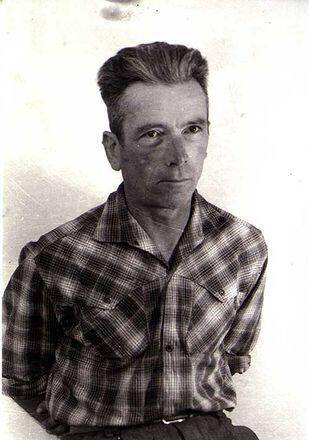


Nasce a Pieve sotto l’Imperial Regio Governo Austriaco, frequenta le scuole elementari a Pieve e, profugo a Milano durante la Prima Guerra Mondiale faceva il garzone di farmacia e suppliva spesso il maestro a scuola.
Capoturno alla Montecatini di Merano negli anni ‘20 emigra poi in Francia nel 1933 (..tra stranieri el pan l’è duro, te se sempre on forestiero..). Durante la Seconda Guerra Mondiale è militarizzato alla Montecatini di Bolzano. Rientrato a Pieve nel 1945 svolge varie attività e, come capocantiere, sovraintende negli anni 1951-1954 alla nuova costruzione delle Malghe Valsorda Prima, Valsorda Seconda e Vazijon ed è in questi anni che scrive la maggior parte delle sue poesie, contenute nel libretto “VITA FRA I MONTI” pubblicato con la collaborazione di Tullio Buffa.
Seguono gli anni come gestore del Rifugio Cima D’Asta (Poesie:”Rifugio Cima D’Asta” e “Dal Zimon co leva el sole”).
Divenuto capo caccia e capo pesca dedica alcune poesie ai cacciatori e ai … bracconieri..
Ritiratosi in pensione, si spegne a Trento.
Le sue poesie sono raccolte in “Vita fra i monti” e “Muscio e Scorsai” viene ora cantata in coro come inno di PIEVE e del TESINO.
Born in Pieve Tesino under the Austrian Empire Government, Gilberto attended primary school in Pieve Tesino; after fleeing to Milan during World War I, he worked as a shop assistant in a Pharmacy and he often covered for the main teacher in a local school. During the 1920’s he worked at the Montecatini in Merano and then moved to France in 1933 (during those years he wrote: “tra stranieri il pan l’è duro, te se sempre on forestiero”, meaning: “ being a foreigner, it is hard to get your own food, you will always remain and feel an alien”). During World War II he did Military Service working at the Montecatini in Bolzano. Back in Pieve Tesino in 1945, he worked many jobs, one of which was building site manager during the construction of the malghe (mountain houses) in Valsorda Prima, Valsorda Seconda and Vazijon. In this period he wrote almost all his poems, collected in the booklet “Vita Fra i Monti” (Life in the Mountains), edited with Tullio Buffa’s help. The following years he managed the Rifugio Cima d’Asta (poems “Rifugio Cima d’Asta” and “Dal Zimon co leva el sole”). After becoming Director for Hunting and Fishing activities, he dedicated some poems to hunters and … poachers. After retiring, he died in Trento.
His poems are collected in “Vita fra i monti” and “Muscio e Scorsai” is now a song for choirs and it is considered as the Anthem of Pieve Tesino and of the whole Tesino valley.